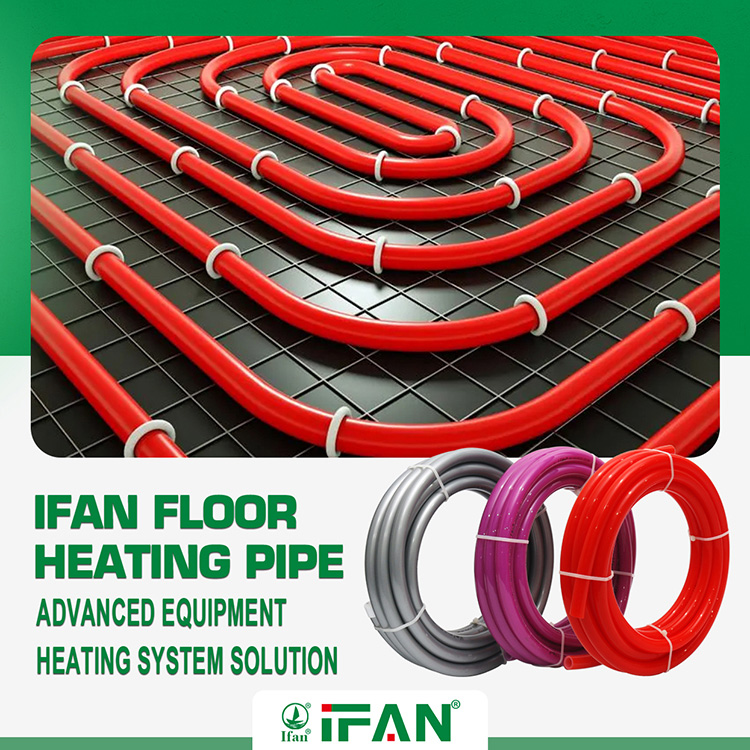What PEX Pipe is Best?
Comparing PEX-a, PEX-b, and PEX-c for Optimal Tubing Selection
When selecting crosslinked polyethylene plumbing tubing, builders face choices between PEX-a, PEX-b, and PEX-c materials. Determining what PEX pipe is best for a particular application requires understanding the manufacturing differences and performance factors of each type. This article compares the PEX variants to identify optimal tubing.IFAN factory with 30+ years of manufacturing experience supports color/size customization support free samples. Welcome to consult for catalog and free samples. This is our Facebook Website: www.facebook.com.

PEX-a Overview and Characteristics
PEX-a tubing is produced using the Engel method to induce crosslinking. Peroxide and heat create free radicals that form stable molecular crosslinks between polyethylene chains. Key traits of PEX-a include:
- The high degree of crosslinking makes PEX-a more rigid than other types.
- Withstands continuous chlorine exposure with minimal material degradation.
- Rated for high-temperature resistance up to 200°F at 100 PSI.
- Good abrasion resistance and impact strength.
The highly controlled Engel method achieves consistent crosslink density and performance. PEX-a offers proven durability across thousands of plumbing system installations.
PEX-b Overview and Characteristics
PEX-b uses silane or similar chemicals to induce polyethylene crosslinking. The crosslinks form more gradually around moisture during manufacturing. PEX-b characteristics are:
- More flexible than PEX-a with lower crosslink density.
- Typically rated for 180°F temperature resistance at 100 PSI.
- Increased elasticity makes PEX-b the most flexible option.
- Offered in a wide range of tubing sizes and dimension ratios.
The flexibility of PEX-b makes it easier to work with for bending and snaking through spaces. PEX-b provides economic PEX plumbing options.
PEX-c Overview and Characteristics
PEX-c utilizes electron beam radiation to create crosslinks in polyethylene instantaneously. The high energy disrupts and rejoins molecular bonds. PEX-c properties include:
- Very rapid, consistent manufacturing process.
- Lower flexibility due to a very dense crosslink structure.
- Highest heat resistance rating up to 230°F at 80 PSI.
- High resistance to fungal and microbial deterioration.
The highly crosslinked structure makes PEX-c more brittle than other PEX. But it offers maximum heat tolerance.
Temperature Resistance Considerations
PEX-a and PEX-c offer a wide heat tolerance margin for hot water plumbing. PEX-b has a lower rating that still meets most needs:
- PEX-a handles up to 200°F consistently at high pressures.
- PEX-b provides a 180°F rating that works for typical 120°F to 140°F hot water delivery.
- PEX-c gives a maximum 230°F rating for recirculation loops and close heater connections.
Considering peak water temperatures determines which PEX variant brings sufficient heat rating.
Chlorine Resistance Comparisons
All PEX types withstand chlorinated potable water. But PEX-a demonstrates the greatest long-term chlorine resistance:
- PEX-a suffers minimal oxidation degradation from years of chlorine exposure.
- PEX-b may become somewhat more brittle after decades of high-chlorine water contact.
- PEX-c inherits the base polyethylene material’s chlorine resistance.
For facilities that heavily chlorinate water like hospitals, PEX-a makes the best choice to maximize tubing longevity.
Freeze Resistance Considerations
PEX-b shows the greatest freeze resistance and low-temperature flexibility:
- The highly elastic PEX-b shrinks the least when water expands as it freezes.
- PEX-a and PEX-c become stiffer and more prone to cracking in freezing temps.
For plumbing applications prone to freezing like exterior pipes, PEX-b provides some safety margin against rupture from ice expansion stresses.
Cost Comparison of PEX Tubing Types
When considering just material cost per foot:
- PEX-a costs 20% to 60% more than PEX-b depending on size.
- PEX-c also comes at a 15% to 40% premium over PEX-b.
- PEX-b gives the most economical PEX option for basic plumbing needs.
But installed cost factors like labor, longevity, and repair rates also affect the total cost of ownership.
Key Applications for Each PEX Type
Based on their specific strengths, each PEX suits certain applications:
- PEX-a for high-temp and critical pressure plumbing where performance justifies cost.
- PEX-b for general residential and multipurpose hydronic systems providing an economic PEX.
- PEX-c for localized high-temperature applications like recirculation loops or steam line connections.
There is no universally superior PEX. Carefully weighing their differences enables matching the optimal tubing to each plumbing system type.
IFAN
IFAN factory started in 1993. And IFAN has a workshop of 120000 square meters with 610 staff. IFAN can design and produce all plumbing pipe and fitting including PPR, PVC, CPVC PPSU HDPE PEXA PEXB PERT pipe and fitting, brass fitting, brass ball valve, heating system, gas system, sanitary faucets, and hose, In the past 30 years, IFAN has never forgotten his mission-To protect health and safety. The IFAN factory uses the best materials to produce high-quality pipe and fittings with an automatic production line and high-tech quality control machines.

